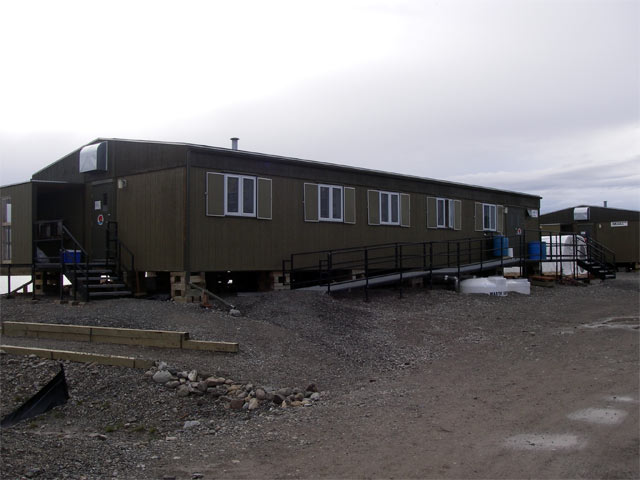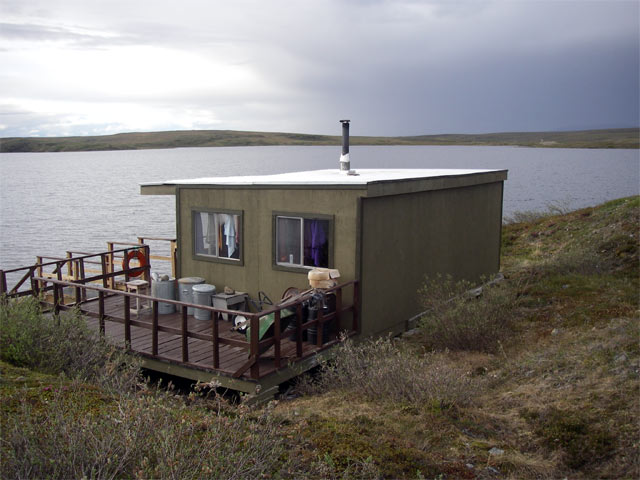( Log In ) Log In is for TREC Teachers & Researchers only
  |
| Tracy_Alley |
 Jun 24 2006, 06:38 AM Jun 24 2006, 06:38 AM
Post
#1
|
 Advanced Member    Group: TREC Team Posts: 43 Joined: 12-April 06 Member No.: 26 |
On Friday, June 23rd, I walked over to Lab #2 to help with several experiments. There are multiple labs at Toolik Lake Research Station, and each scientist is assigned a lab in each modular building. In our building, we have three lab areas and six offices. Below is a picture of our lab.
 We worked in the lab for a couple of hours this morning measuring the length of leaves. I think we measured nearly two hundred leaves of various shrubs. The data will be compared each year to see how winter has affected the shrubs. Shrubs trap snow which insulates the ground. Decomposition and nitrogen mineralization happen at a faster rate when the soil temperatures are warmer. Below is a picture of Alyse, research assistant from New Hampshire, measuring leaves.  In the afternoon, I searched for animal scat on the property surrounding Toolik Lake. Scat is the name scientists call animal droppings. I realize this was a bizarre quest, but I wanted to know what animals where lurking around our camp when we were not looking.  Caribou scat - Caribou are Arctic deer with large antlers found in both sexes.  Moose scat -Moose are the largest member of the deer family. Ptarmigan is the official state bird of Alaska. There is a picture below of a summer ptarmigan and winter ptarmigan (plumage turns white in winter). The first picture shows the scat of ptarmigans.    At the end of the day, I relaxed in the sauna. I wanted to relax my sore muscles. However, I was not able to tolerate the one hundred and seventy degree temperature inside the sauna for long!  Fast facts about the Arctic: The word Arctic came from Arktos which is the Greek word for “bear”. Polar bears and traditional Inuit communities have high levels of industrial chemicals in their bodies – higher than any living creatures on our planet. Toxic substances drift north and get absorbed by animals. They become part of the food chain and are not broken down. The Arctic Ocean is the smallest of the world’s four oceans and shallowest. Much of the ocean is covered by sea ice. Can you name all of the oceans? The Pacific Ocean is twenty-one times larger than the United States. The Atlantic Ocean is eleven times larger than the United States. The Indian Ocean is nine times larger than the United States. The Arctic Ocean is one and a half times larger than the United States. Note: I read another great book for middle school students this evening. It was written by Jean Craighead George. It is titled Julie of the Wolves. It won the 1972 Newbery Medal which is the highest honor for an author. It is a book about a girl living in the North Slope of Alaska. She begins a journey of self-discovery where she lives with wolves for a time in the Arctic tundra. It is an excellent book, and I would highly recommend it. I met Jean Craighead George in 1994 in Columbus, Ohio. She researches extensively before she writes a novel for young people. |
  |
2 User(s) are reading this topic (2 Guests and 0 Anonymous Users)
0 Members:

|
NSF Acknowledgment & Disclaimer | Time is now: 9th November 2024 - 04:32 PM |
Invision Power Board
v2.1.7 © 2024 IPS, Inc.








